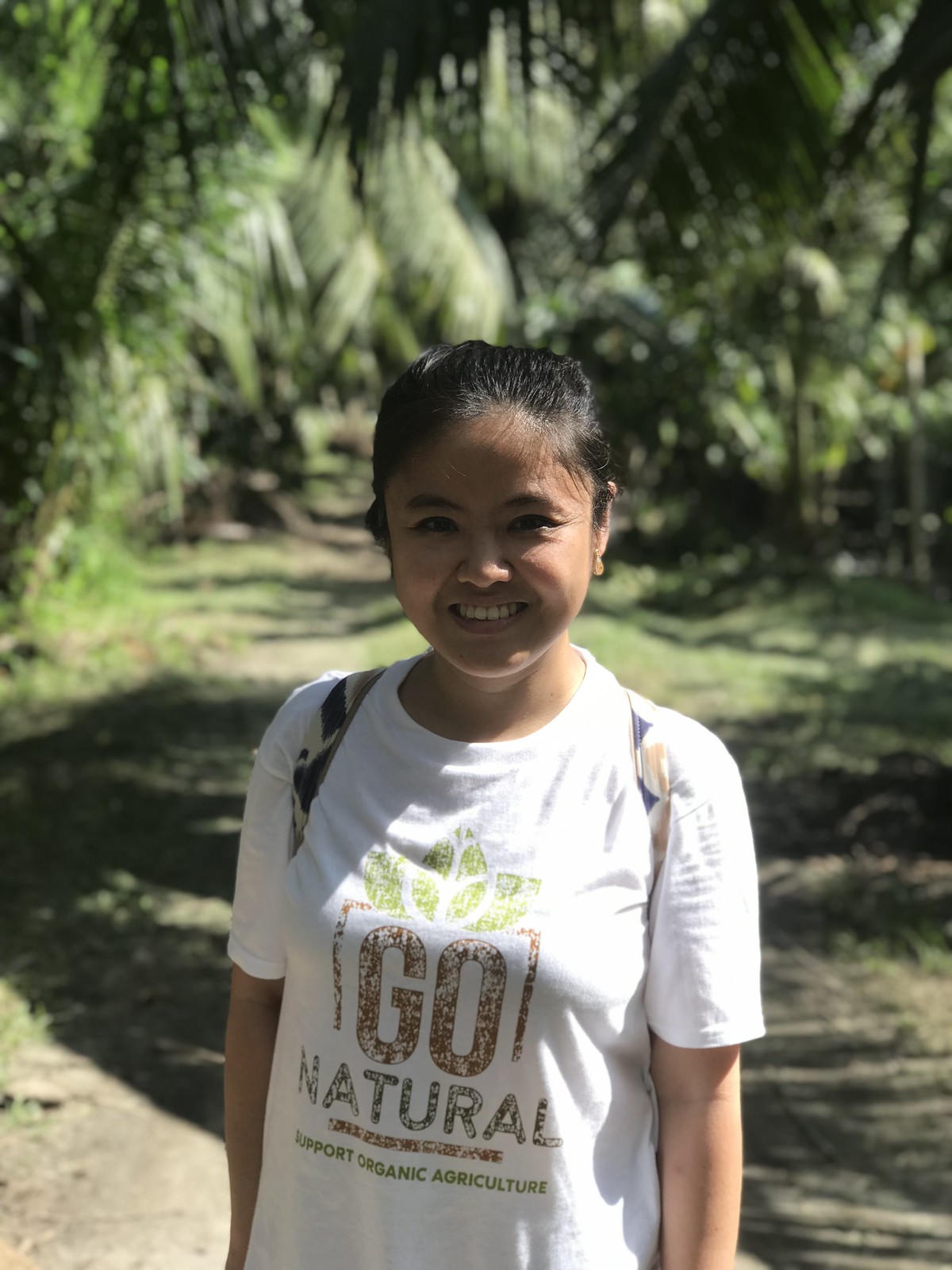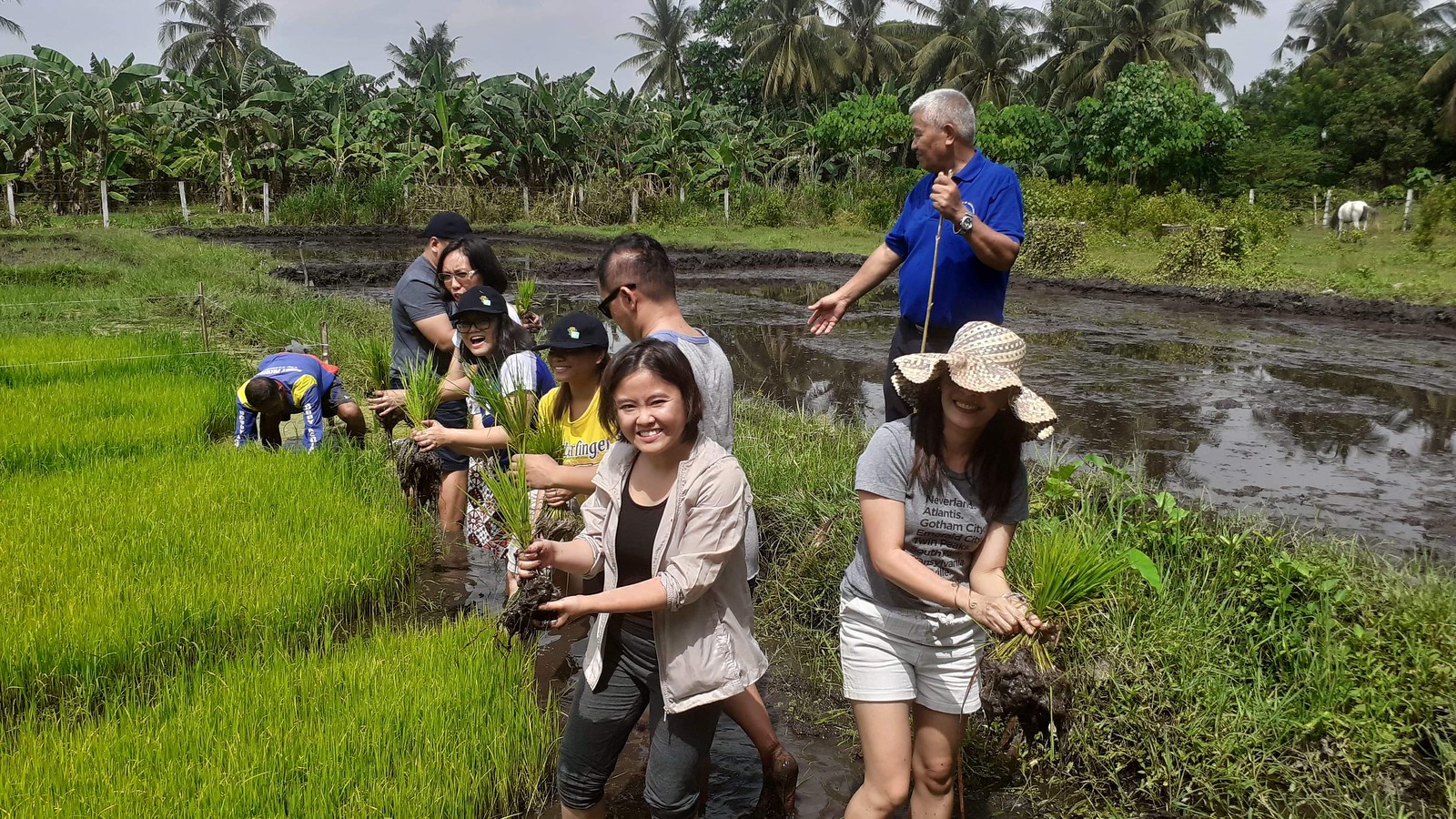I wish we had more time to spend at GerNil's Farm for this year's 10th Organic Agriculture Trip with ATI (Agricultural Training Institute). Gawad Saka Awardee Mr. Gerardo "Boy" Cordero is a wonderful host and conversationalist perhaps due to his wealth of experiences in organic farming. His farm is an accredited School for Practical Agriculture under ATI-RTC XII in SOCCSKSARGEN (SOX). We were here in SOX for 4 days to learn about more agricultural practices and farm tourism activities straight from the farmers. I highly recommend passing by this farm to eat, walk around and let Mr. Cordero impart some of his learnings, experiments and wisdom, especially if you have that dream to plant someday even in an urban setting like Manila! He loves coconuts, mangosteen, cacao, palay, isdaan, pigs and other farm animals. But first, let me tell you about the food there! Hehe.

The name GerNil's Farm came from the owners' combined names Mr. Gerardo and Nilda Cordero. It was accredited in 2014 as an ATI Learning Site and promoted one year later as a ATI School for Practical Agriculture. This year, they are vying for a spot as one of the few DOT-accredited Farm Tourism Sites (still assisted by the ATI) in SOX with their farm practices as their tourism activities in accordance with the Farm Tourism Development Act of 2016. I believe Region 12 is typhoon-free so it's very ideal for farm tourism.

They went organic 11 years ago. What I noticed at first glance was the abundance of shade in their farm and coconuts. The trees are also spaced properly which contribute to the aesthetics of the place. Note: Check out the Vermitea recipe in the board below from trainings in the farm!

A smiling Mr. Boy Cordero greeted us. He told us that he has 3 farming sites and he believes in the 10x10 (meters) or less spacing for coconuts, cacao (3x3), mangosteen, lanzones and other trees because land sizes are getting smaller and smaller per generation. Imagine your lolo having 10 hectares and divides to his 5 children and your parent dividing the 2 hectares to their 4 children. In the future, only 0.5 hectares will be left per person. So the efficient and maximized use of a small parcel of land to feed your family is crucial. Today, we can even practice this in the city.
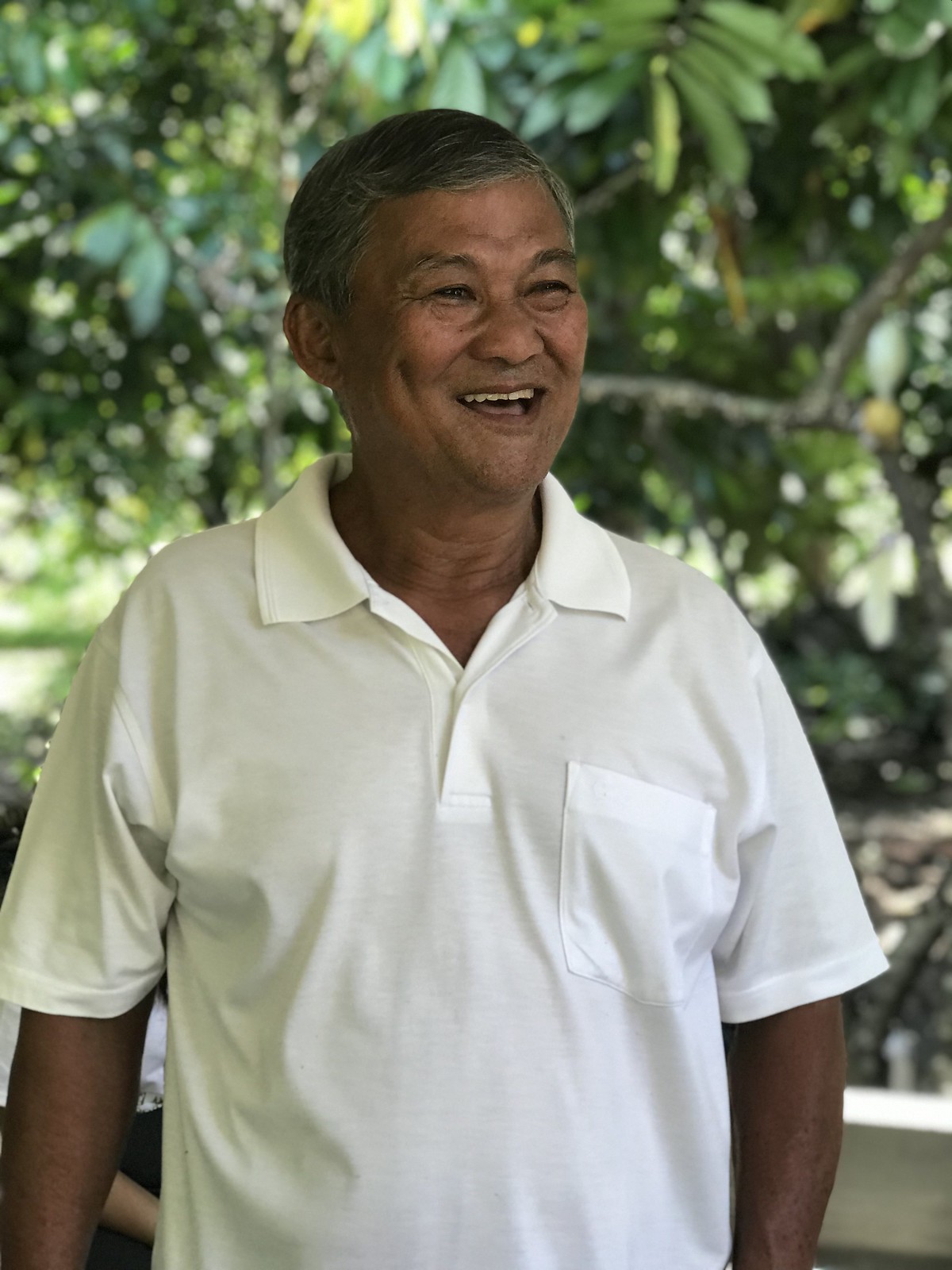
He is also an advocate of medicinal herbs and plants since his grandma was very sickly. That we just poison each other with what we sell and eat if we continue to use chemicals like in the now-traditional farming. He told us about the San Pedro (St. Peter) grass root that can help people with cough, diabetis, high blood and UTI (boil 1 liter) and the nut grass for LBM.
For health tips for plants, he told us that you can put baking yeast as fertilizer and spray for our household plants and flowers (put 1 tbsp in 1 liter of not chlorinated water, spray early morning or late afternoon). We can also use Perla or any organic soap powder (at 3 tbsp per gallon of water) to spray the leaves for ants and aphids. As a side note, don't kill ants in lanzones as they are pollinators. He also recommends the Makabuhay plant but spray it while the plant is young and wait 30 days for the bitterness to be removed. Chili with water is also good for pest control. Salt is great for grass. Lastly, hugas bigas or the water used to wash rice helps grow plants!
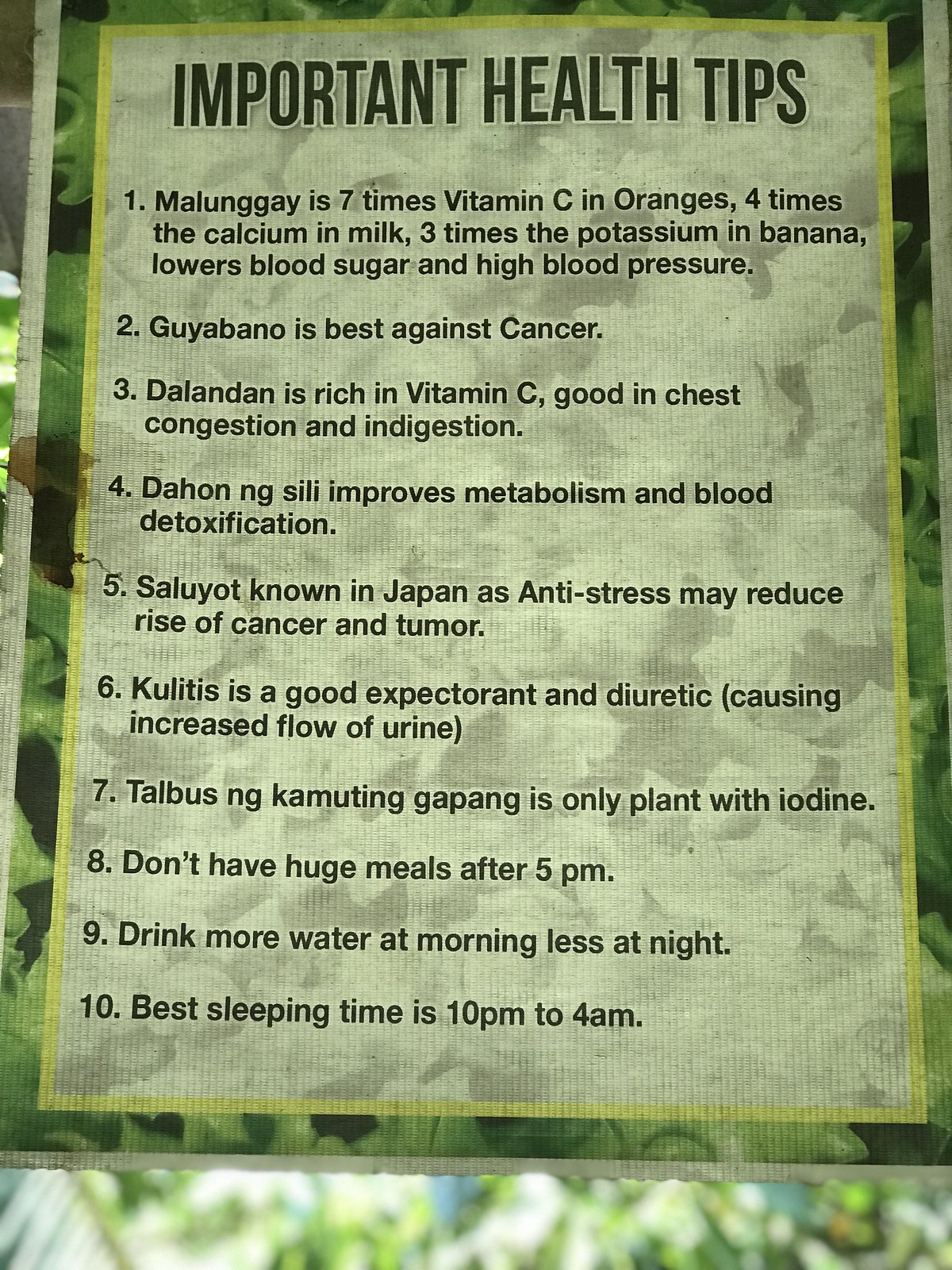
We tasted his homemade tablea hot chocolate and we couldn't stop getting a second and third cup. Haha. It was smooth, rich, flavorful and so addicting! I don't like tablea very much because of the coarseness and taste but this was worth taking an allergy pill for anytime. For this heavenly cup, they use a mix of the BR-25 and UF-18 cocoa variety ;) I was so glad they sell this at P60 per pack that makes 12 cups. Mr. Cordero recommended adding their organic coco sugar as sweetener.
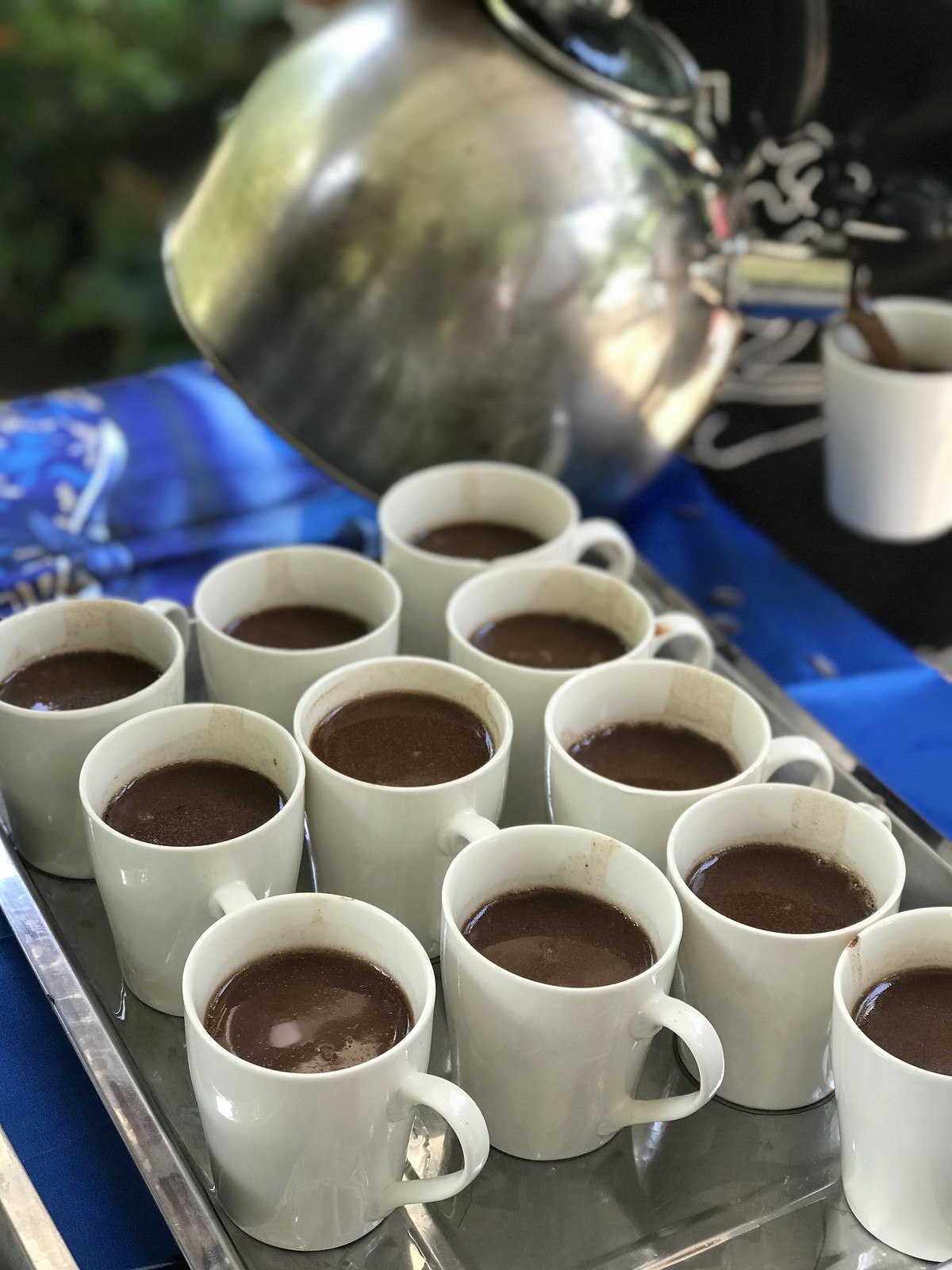

I tried dipping suman in the hot chocolate and OMG, I think I ate 3 haha. I stopped hanging around the snacks table when they called us for lunch time LOL.

Lunch was another memorable activity at GerNil Farms, they served pato-tim (patatim made of duck), ginataang native chicken with Ubad (core of banana, like in Sebul Farm), black rice and the yummiest vegetarian lechon!
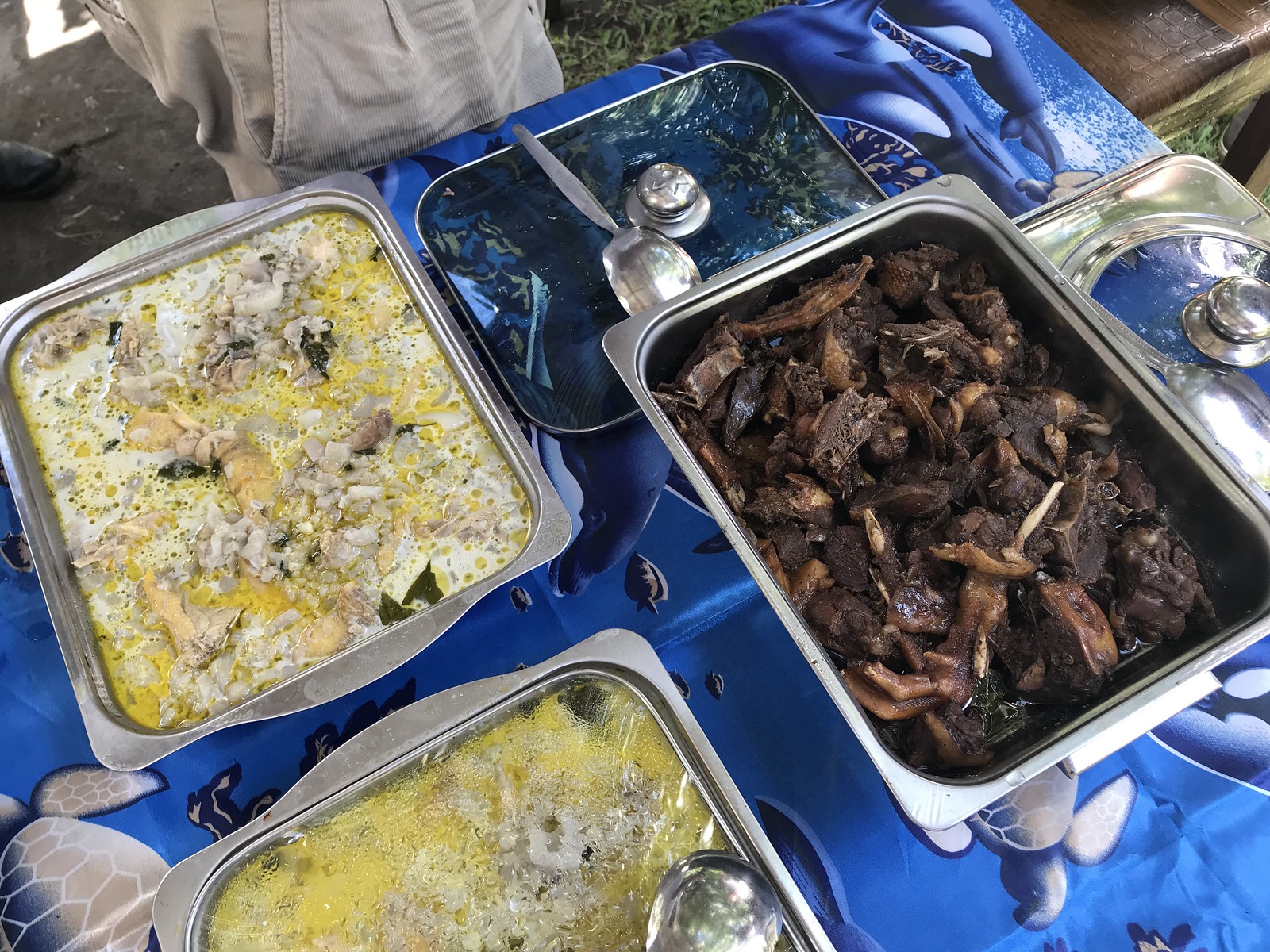
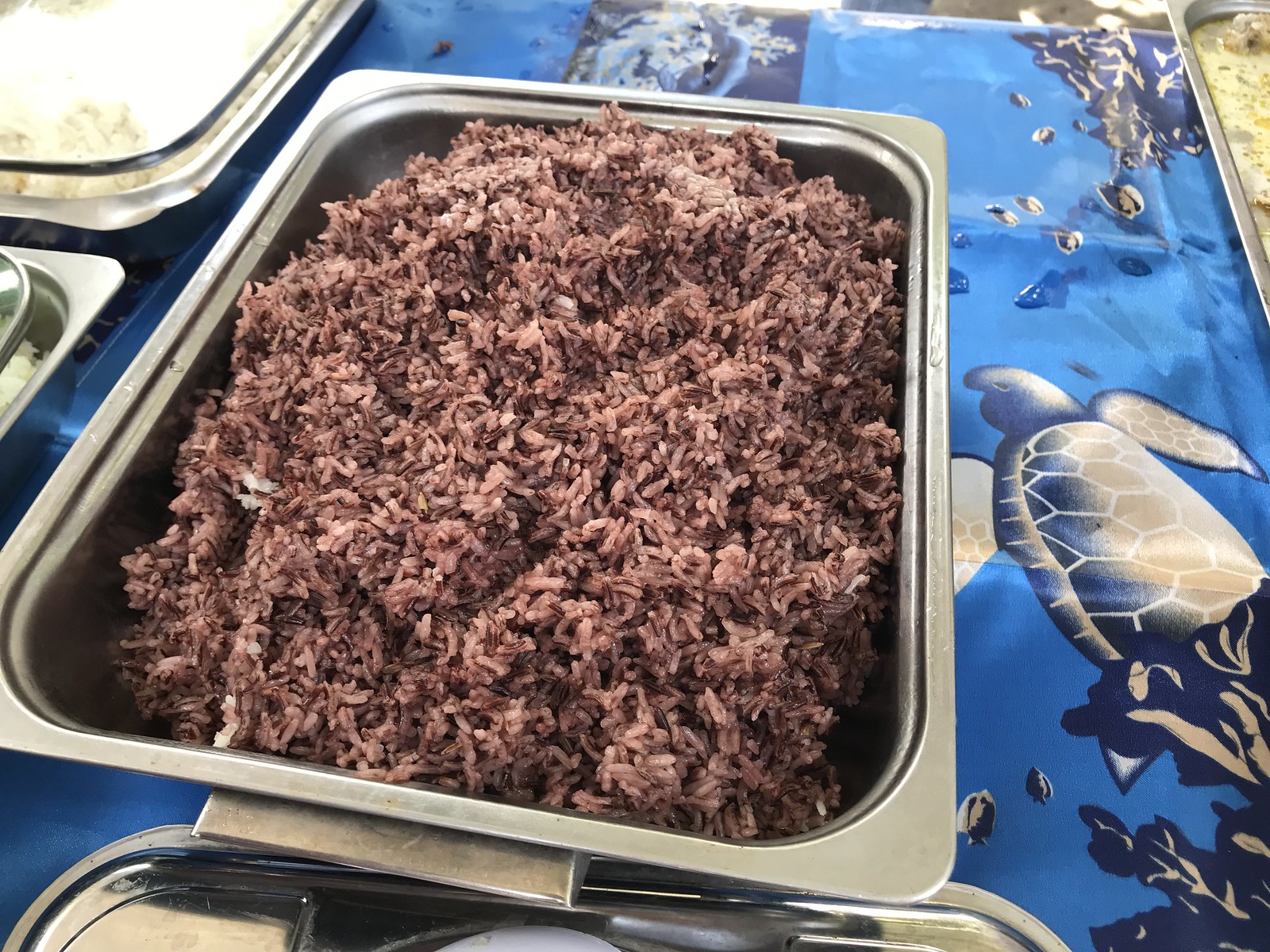
I had 3 helpings of this too - the flesh was so soft, so tasty and the skin crunchy, the fat was also not as greasy! It was SOOO good - no need for sawsawan (I think they just put salt and tanglad?)! I know they say that pork is bad for you blah blah but I believe that when you know where it comes from and what it eats, it's more than okay to indulge a bit.
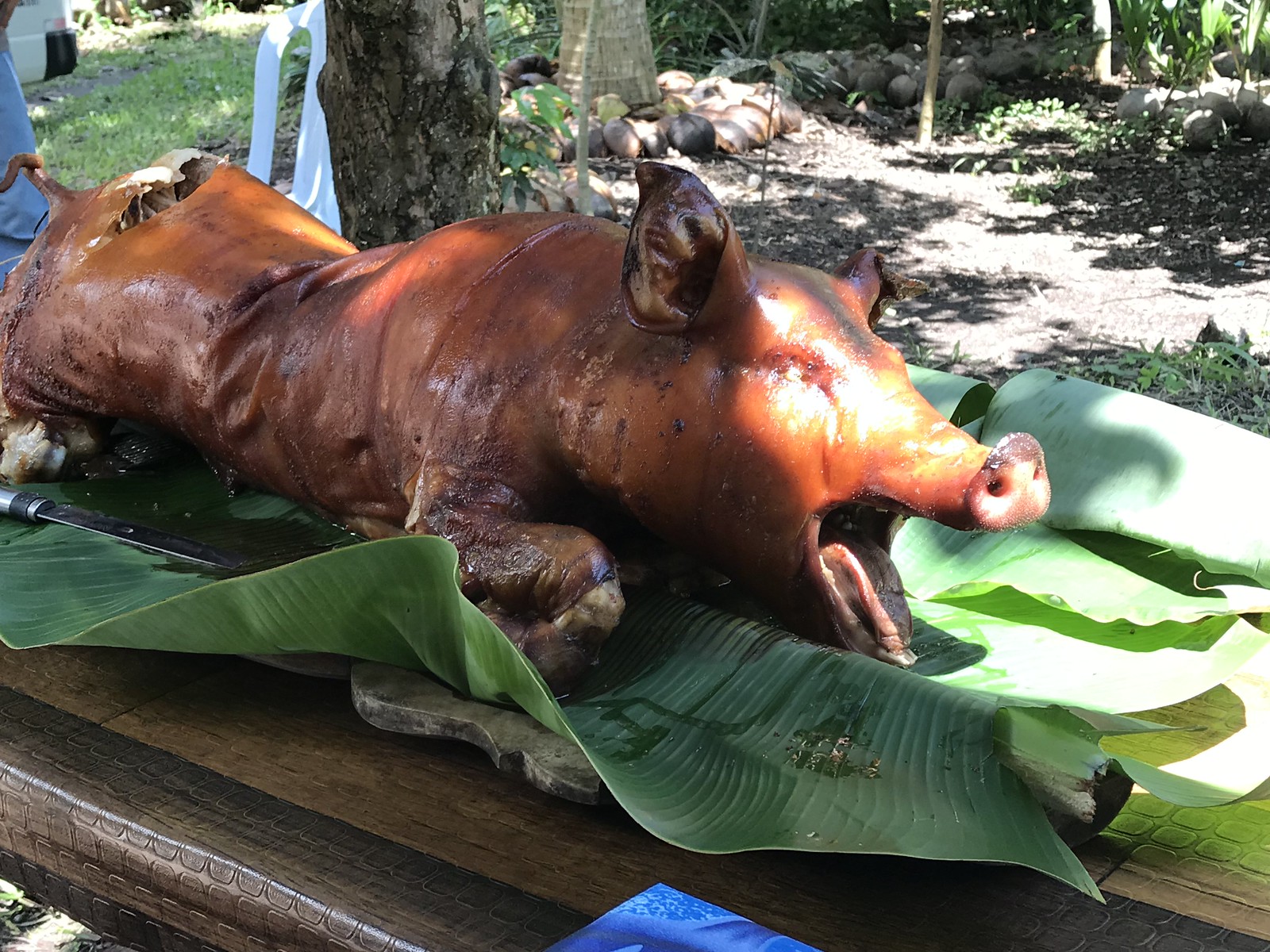
For their signature drink, they taught us how to make katangsi - kamote tops, tanglad (lemongrass) and calamansi! Boil two arm's length of tanglad until the smell comes out then add one arm's length of kamote tops until the purple color appears. Add 1.5 cups of calamansi, 10 liters of water and sugar to your taste.

On a serious note, Mr. Cordero told us about why he loves his mangosteen trees. He was suffering from kidney stones a few years back and ate lots of this fruit until they disappeared! He claims mangosteen is also good for lumps in the breast and has other benefits.
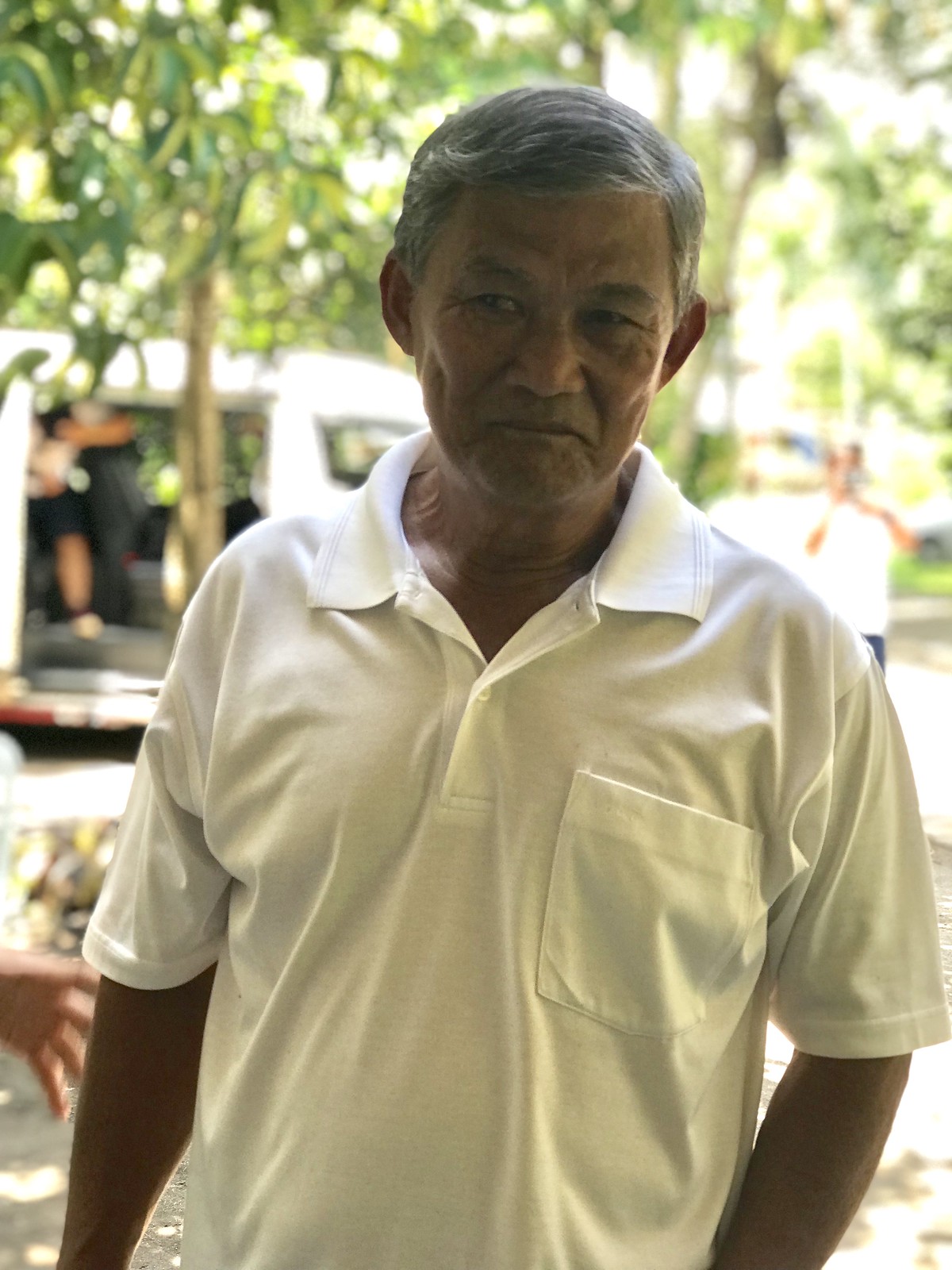
July is the mangosteen season! Too bad we missed it by a month! I am still not a mangosteen lover but after hearing the benefits, I might give the fresh ones a try when in season.

They pulvorize the pericarp (rind, outer shell) and turn them into mangosteen capsules for sale at P3/capsule (P150 per pack of 50). These can be sent via courier if you buy around 10 packs or more.

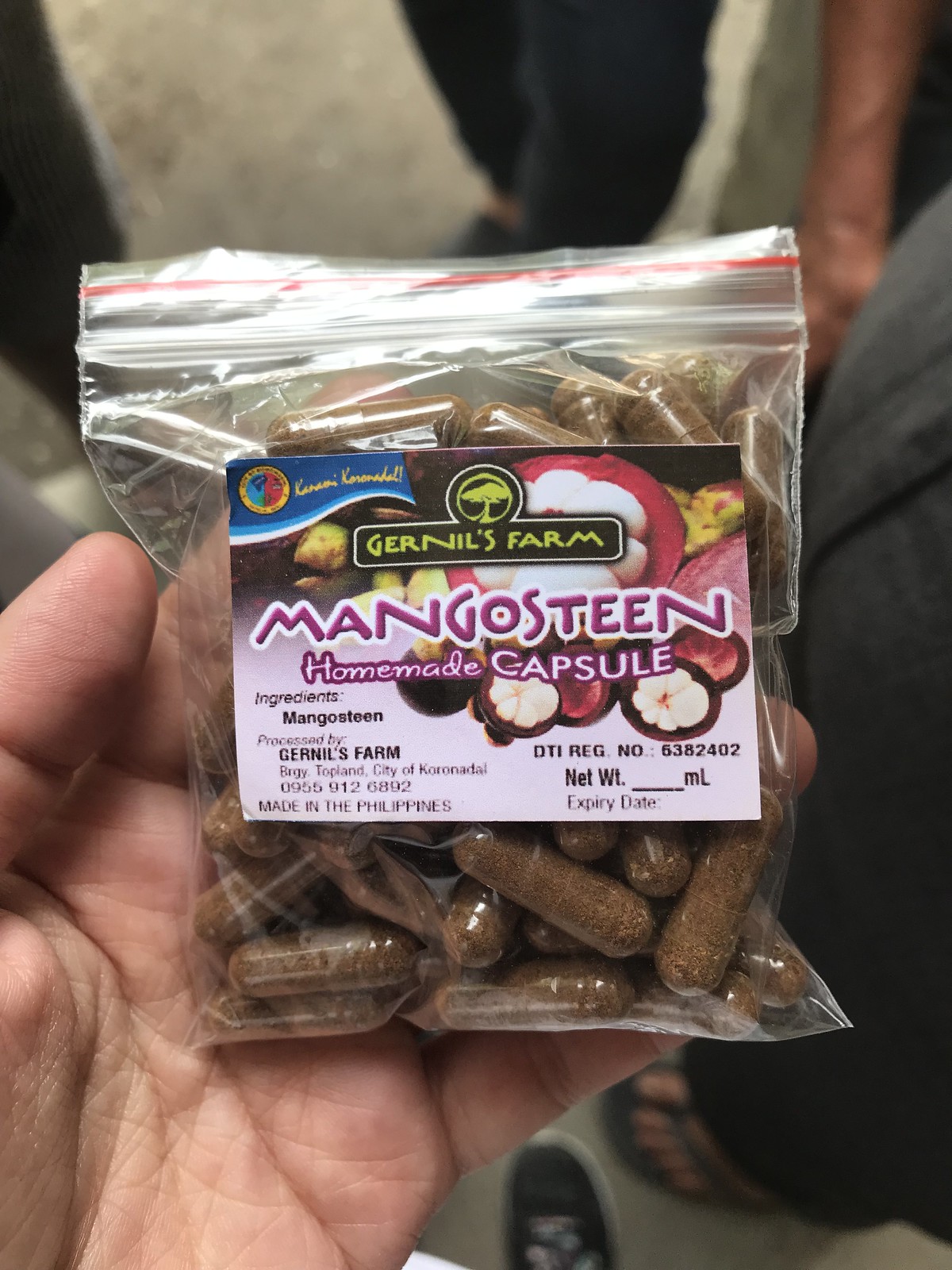
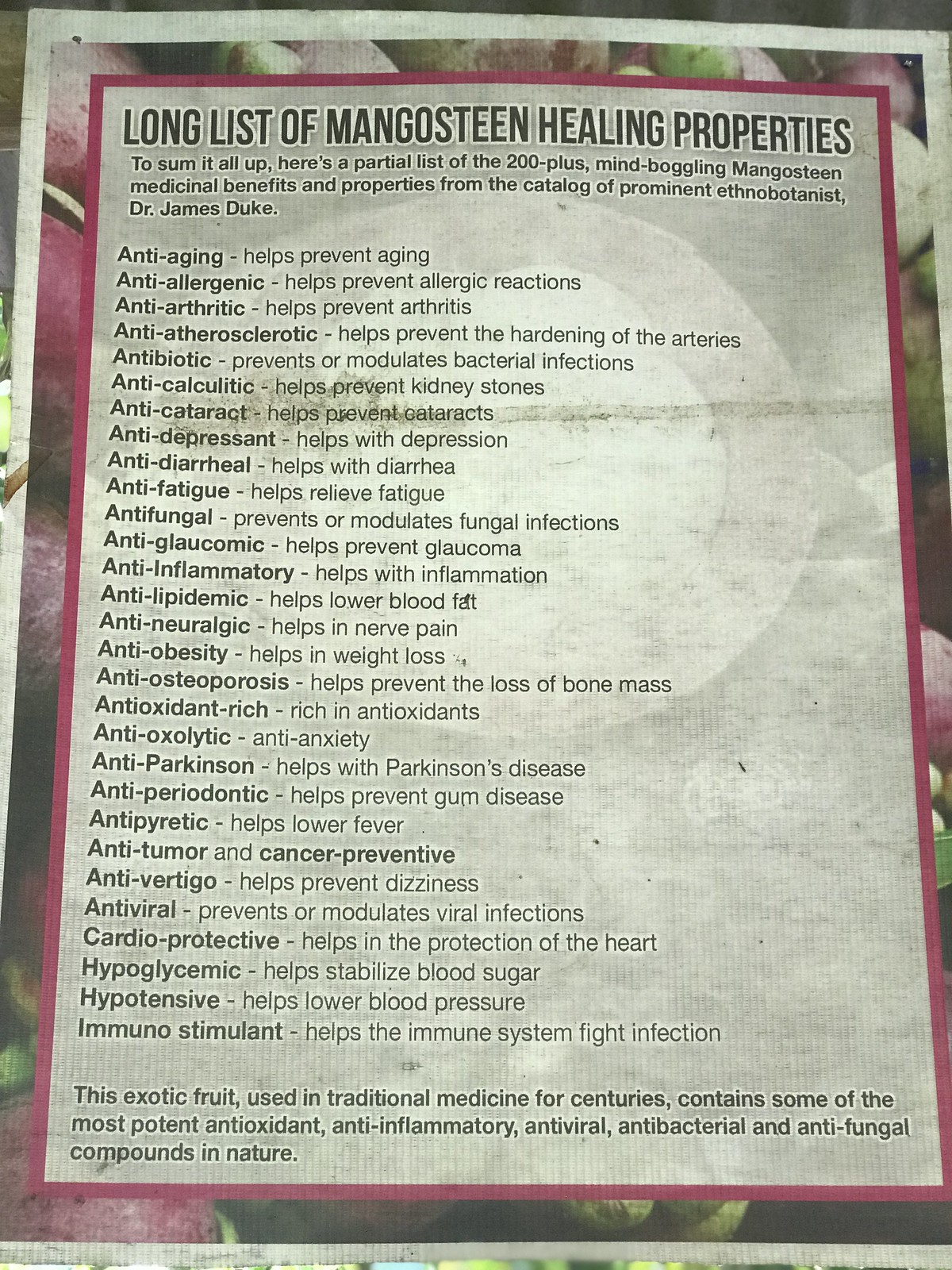
Manong Boy was awarded the Gawad Saka for the coconut-based farming category so naturally, we shouldn't dismiss his collection of coconuts! I asked about this coconut decoration I found in his trees and he explained that this is for retaining moisture and these coconuts will decompose here - "to give back buko to the buko" he said. You can also do this with other plants.
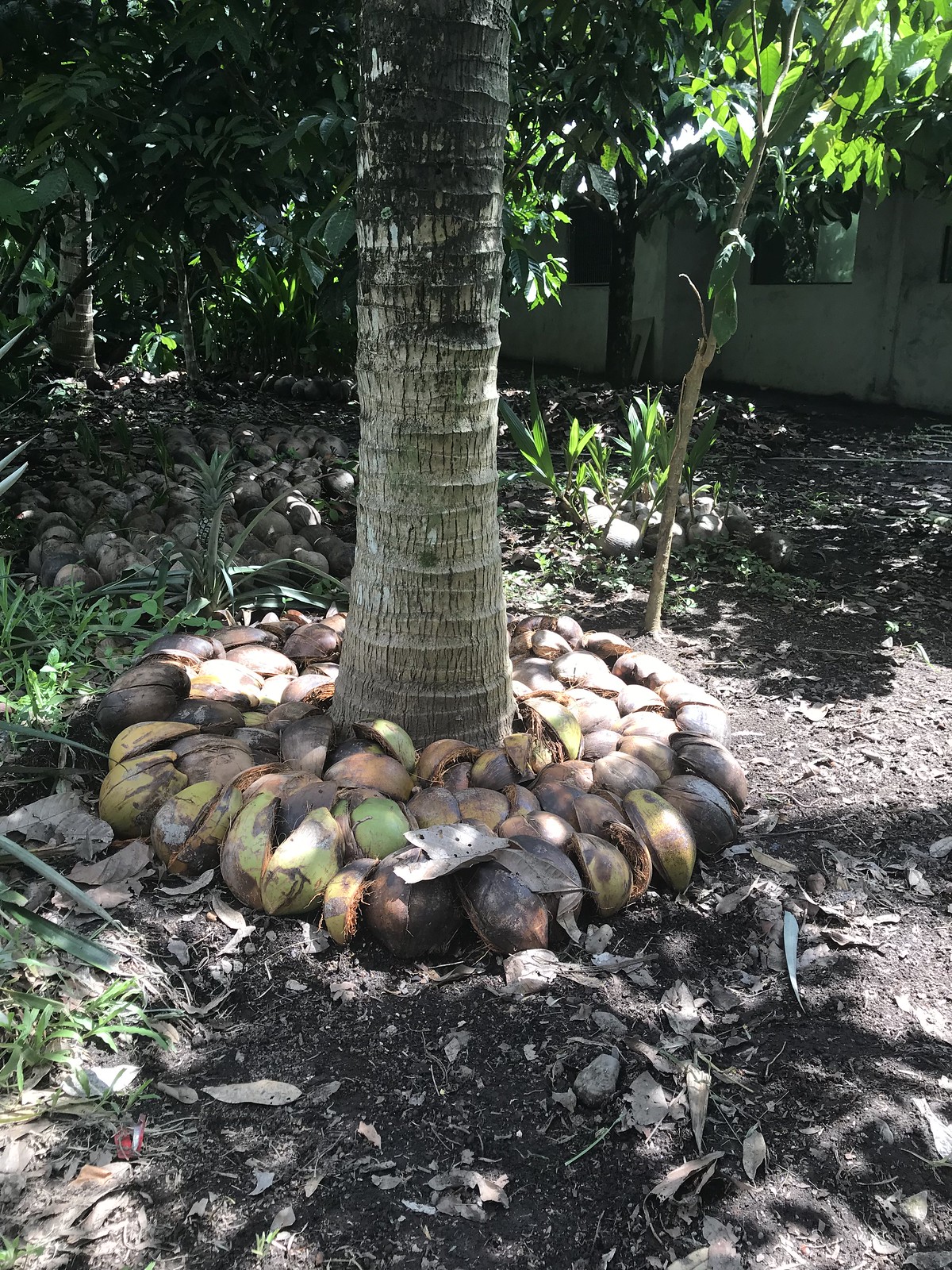
He told me about the pandan coconut that "tastes like pandan" and these aromatic coconuts that "tastes like Sprite". I loved the sweet juice of these aromatic coconuts, it was close to the super small but sweet ones I had in Vietnam that I've been meaning to find.

I would love to visit his farm again so this will come handy! Mr. Boy is very approachable and very open to answer questions about his farm, fruit trees and organic agriculture know-how!

We took a short van trip to his other farm site. There we found rows upon rows of coconuts!
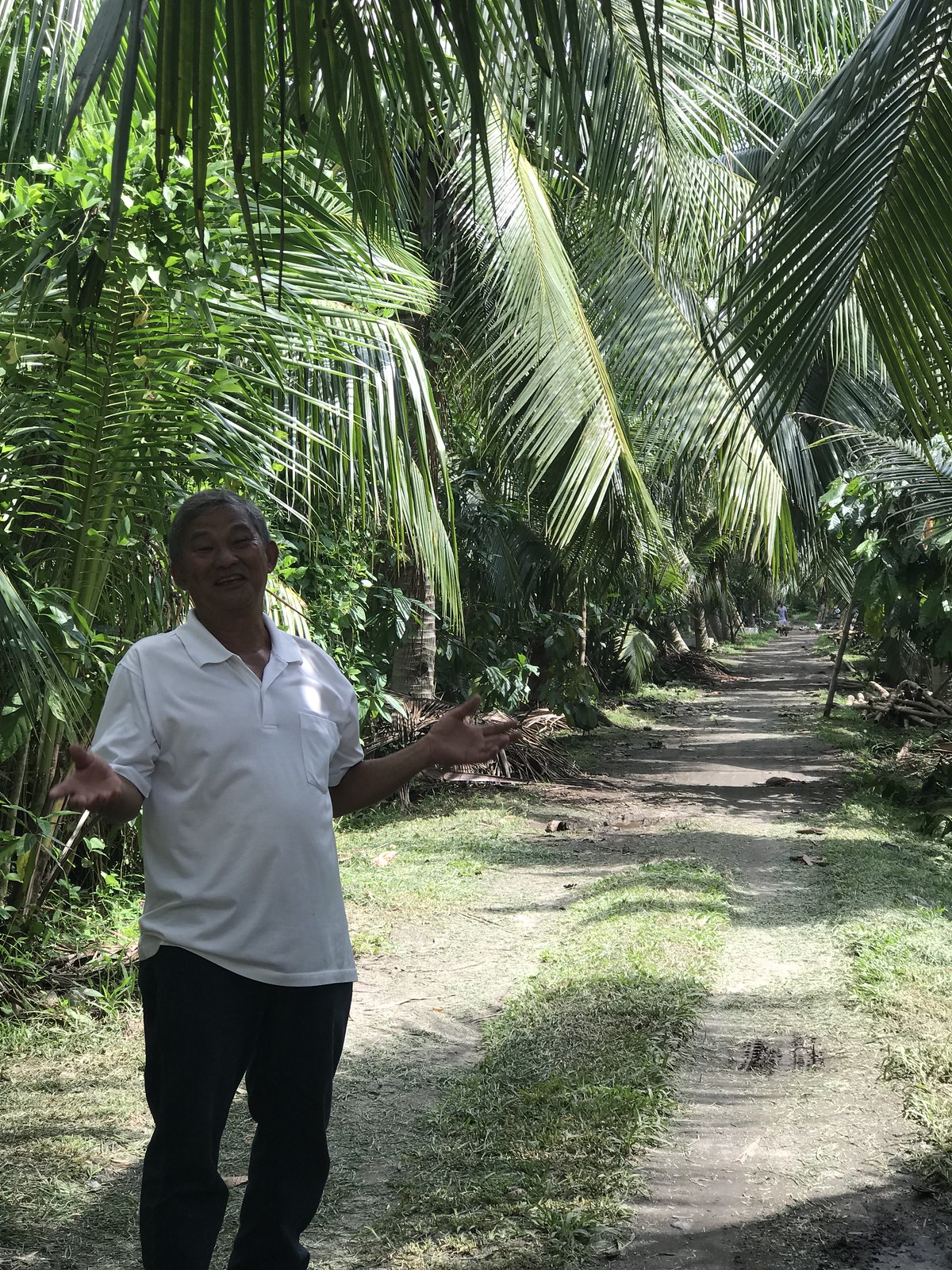

He even plants them in banks.

It was like a mini plantation where they collect coconut sap and make coco sugar and coco syrup! Coconut sugar is a healthier alternative to white or brown sugar.

You can see ladders and containers for collecting the liquid sap every 5 hours (6 hours if nighttime). If you miss that time, it won't turn into coco sugar anymore. Mr. Cordero found aromatic coconuts to yield the highest at around 3.5 liters per tree per day with a high sugar content versus other varieties and that not all coconut varieties can produce sap. This is a 24-hour operation and the sappers are paid around P26000 a month for their contribution.
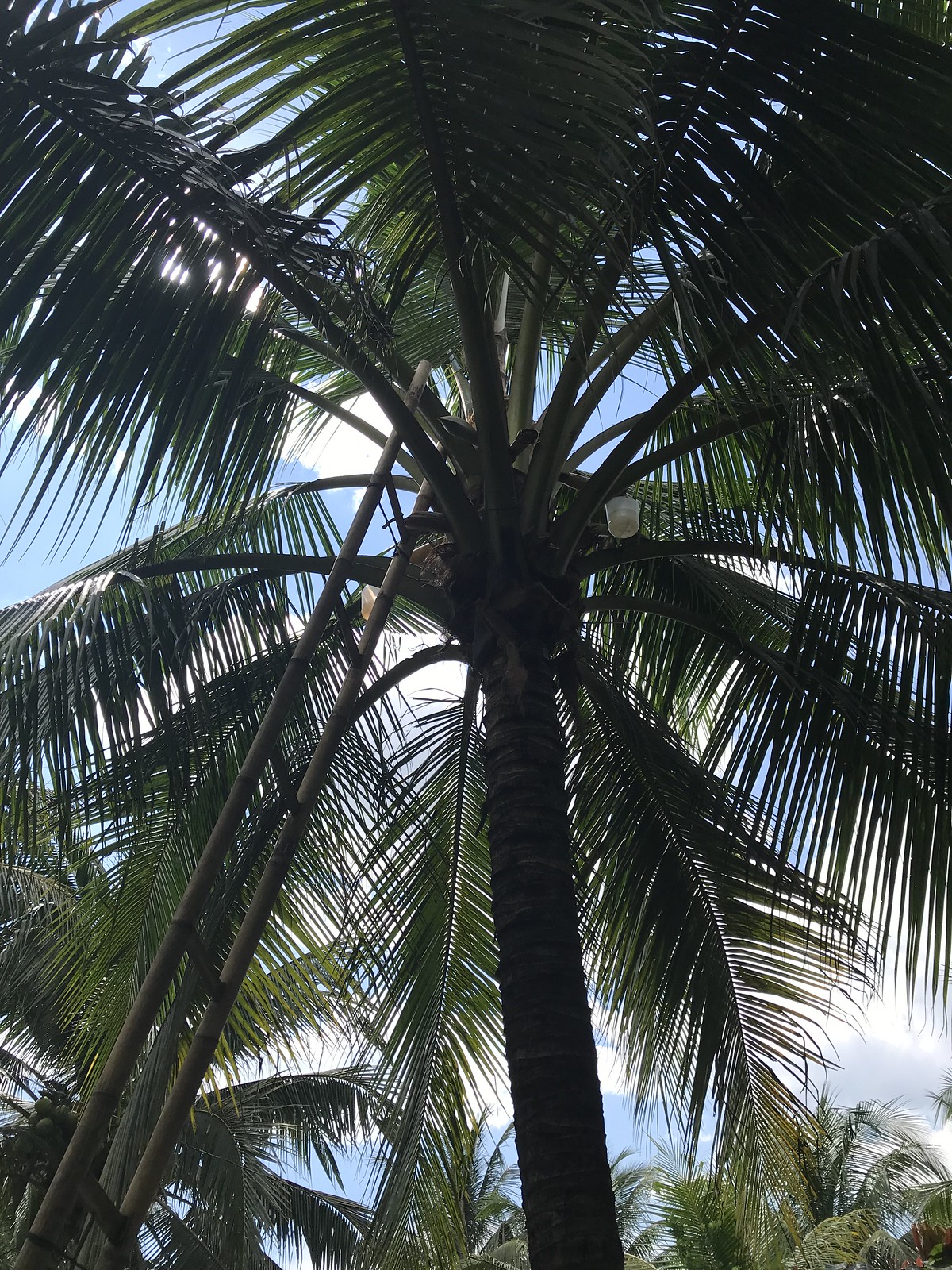
Part of the coconut sap sugar production involves evaporating the moisture via heating through these ovens. When it reaches the boiling point, it turns into caramel latik and 3.5 hours later into sugar. 30 minutes later, it turns into fructose so timing is also key.
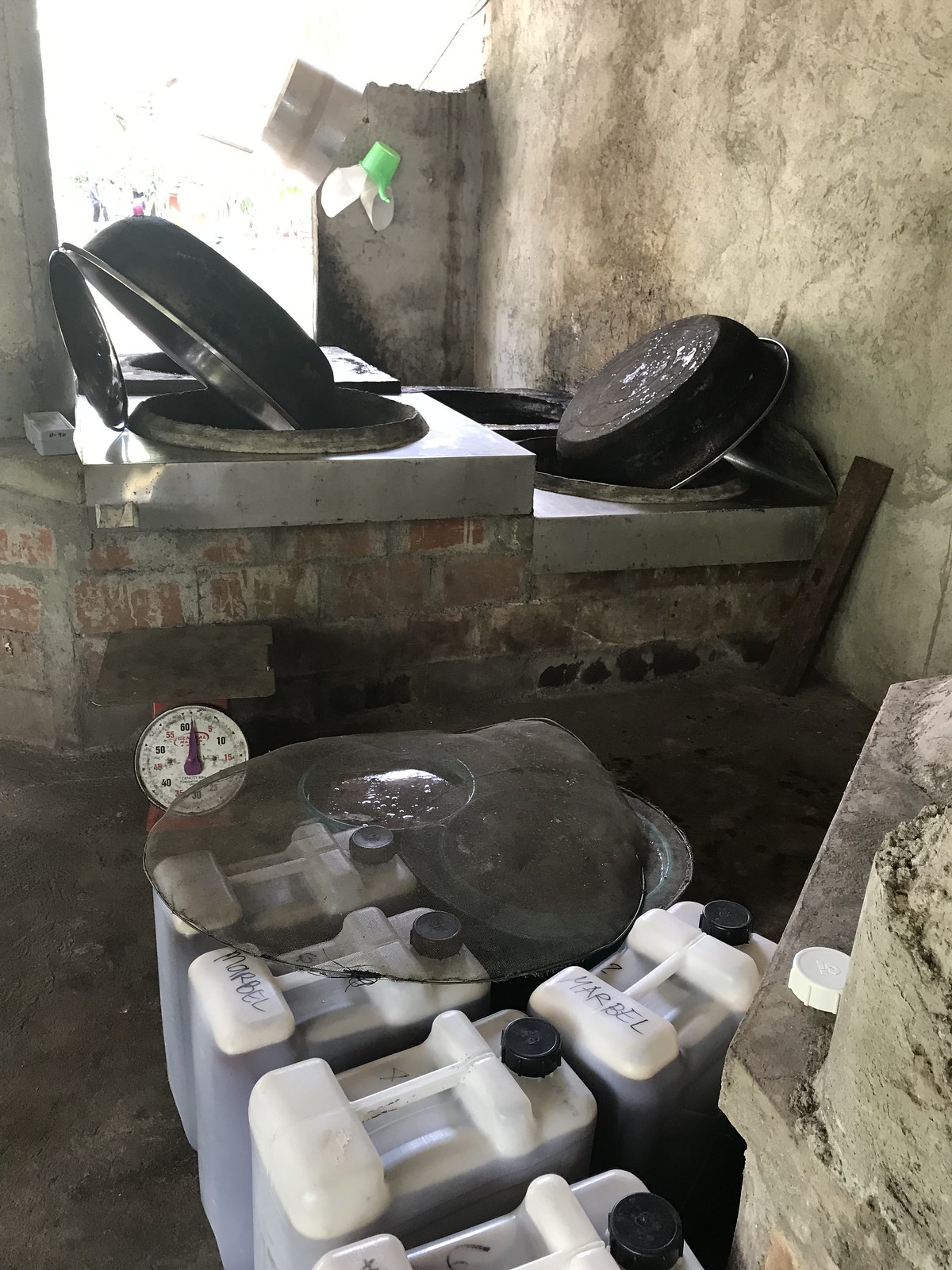
The husks are used as bunot or panggatong in the coco sugar ovens so nothing goes to waste.

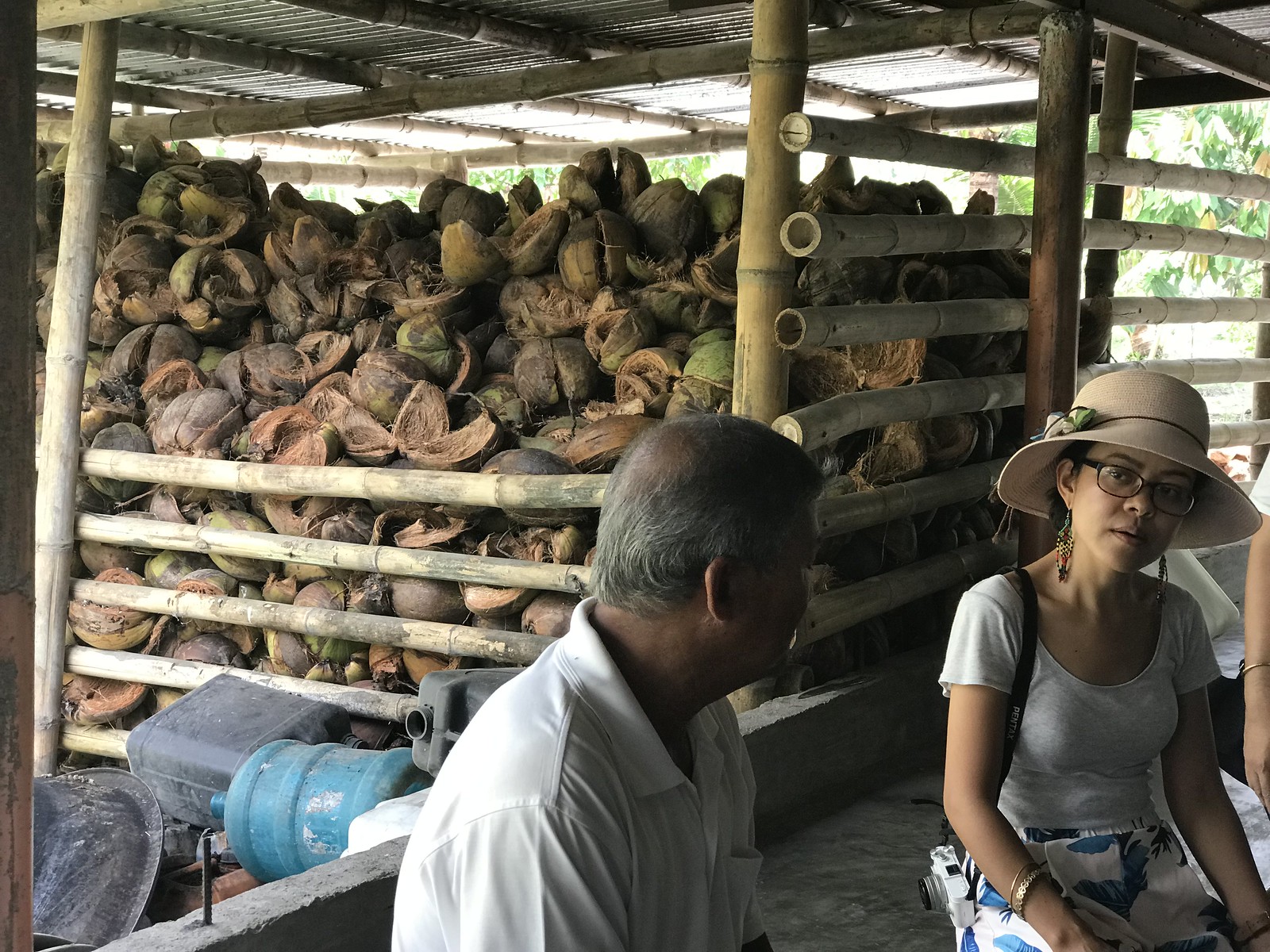
When asked why they need to use ladders and not chop foot paths in the coconut trees instead, Mr. Cordero said that they don't do that esp. when the tree is young or else they might get infected by farm weevils. Female weevils can lay their eggs on the fresh wounds of young palms.
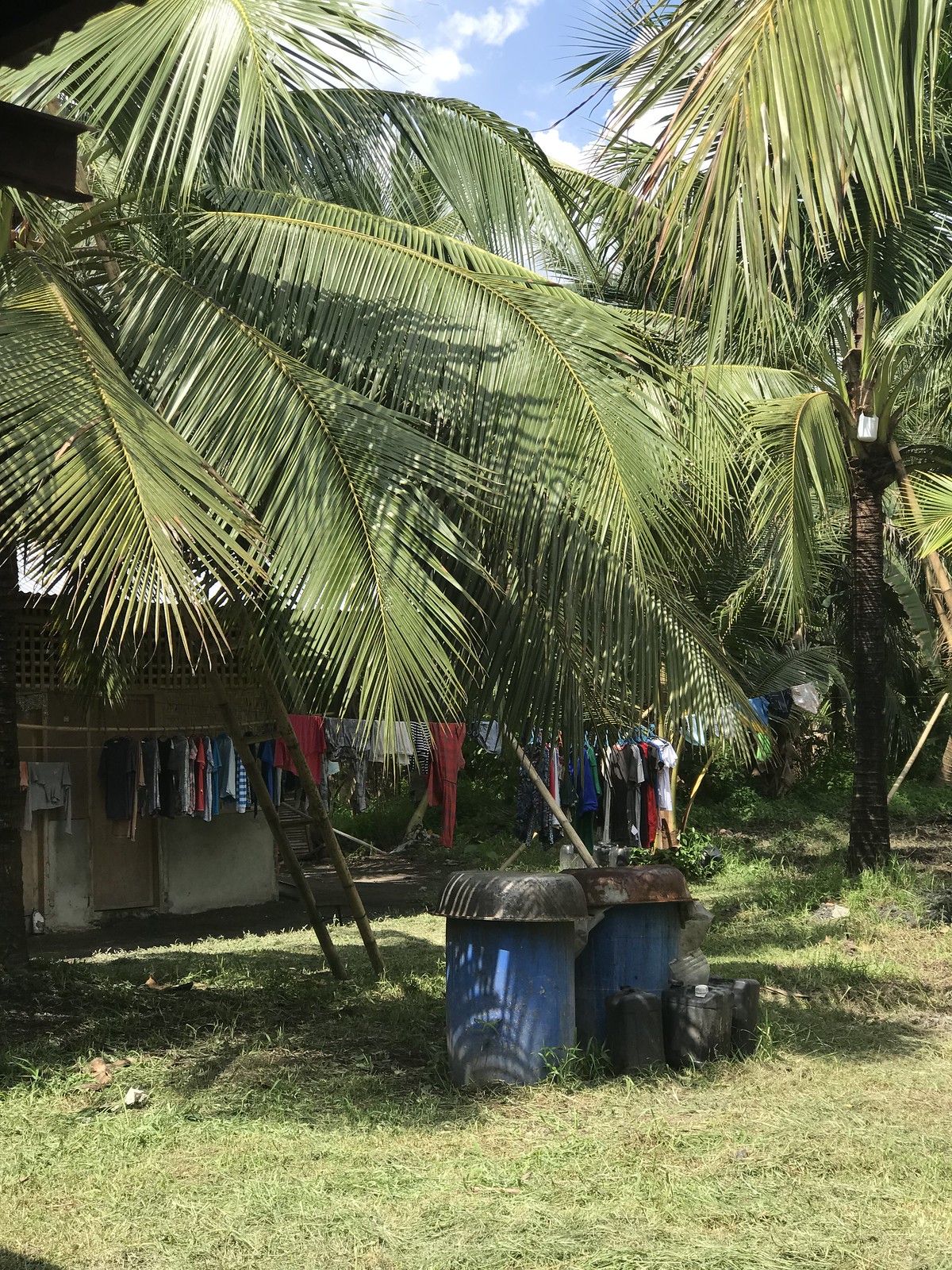
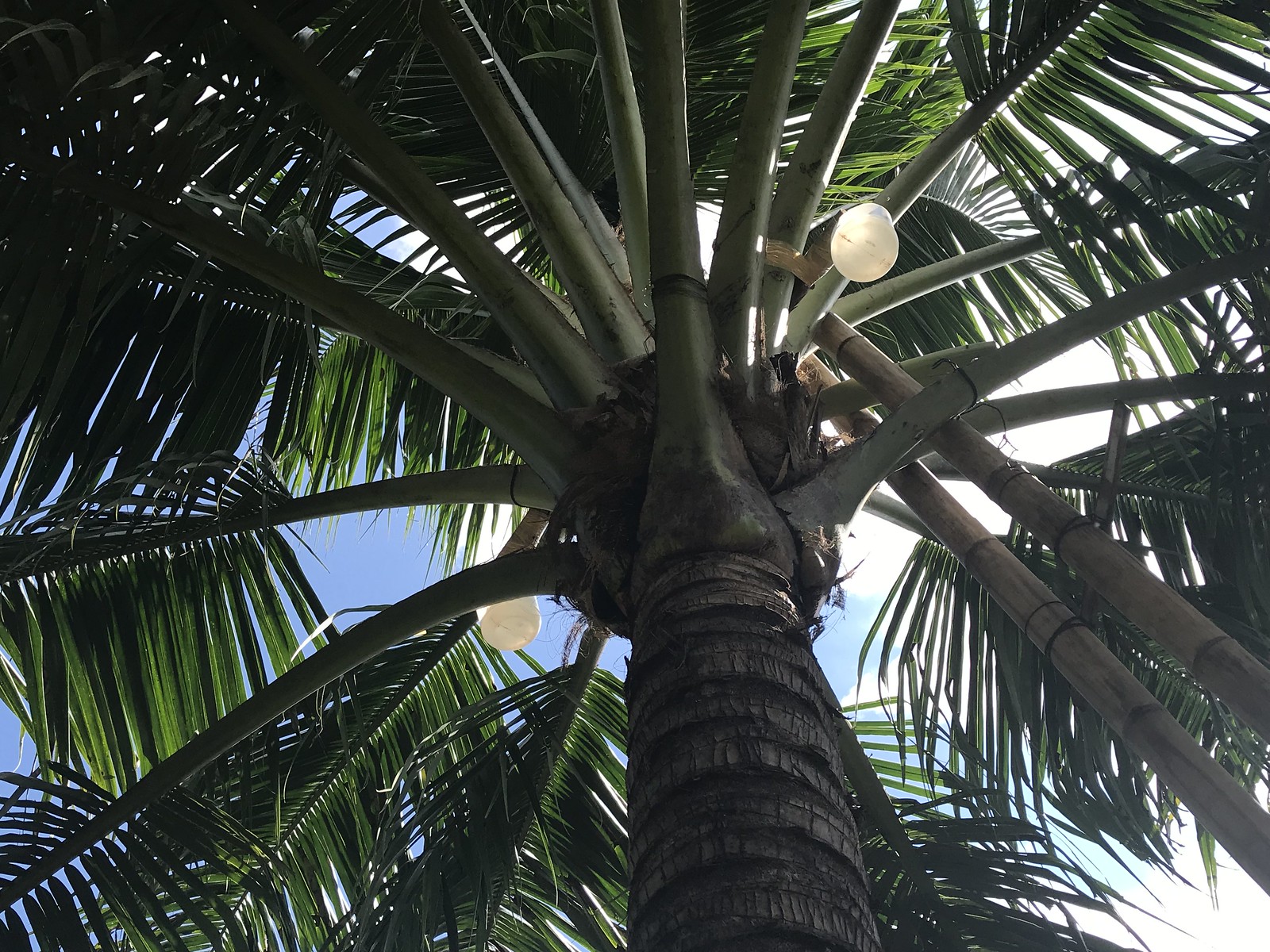
These are some of the processed goods that they sell fresh from the farm - Yummy Tablea at P60 per dozen tablets, Coco Syrup at P60 for a small bottle and Coco Sugar at P180 per kilo. I can't wait to see these in Region 12 trade fairs in Manila!

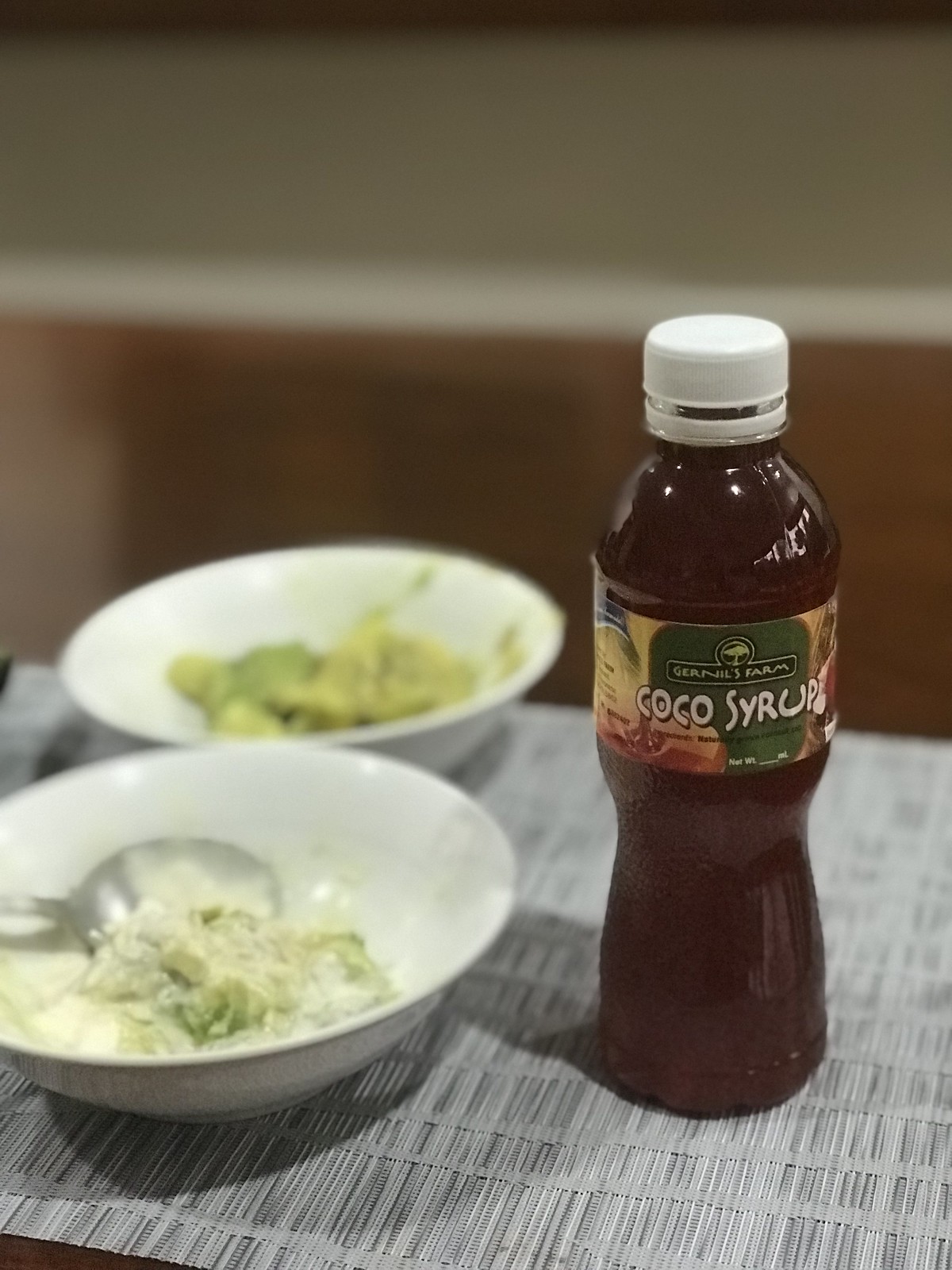
Of course, Mr. Cordero said no to monocropping. This is 5 hectares of organic diversified farming where you integrate plants with animals. The ATI is helping him fund this design of his for a 3-storey structure for ducks (pato), lamb (tupa), goat (kambing) and African night crawlers (bulate).
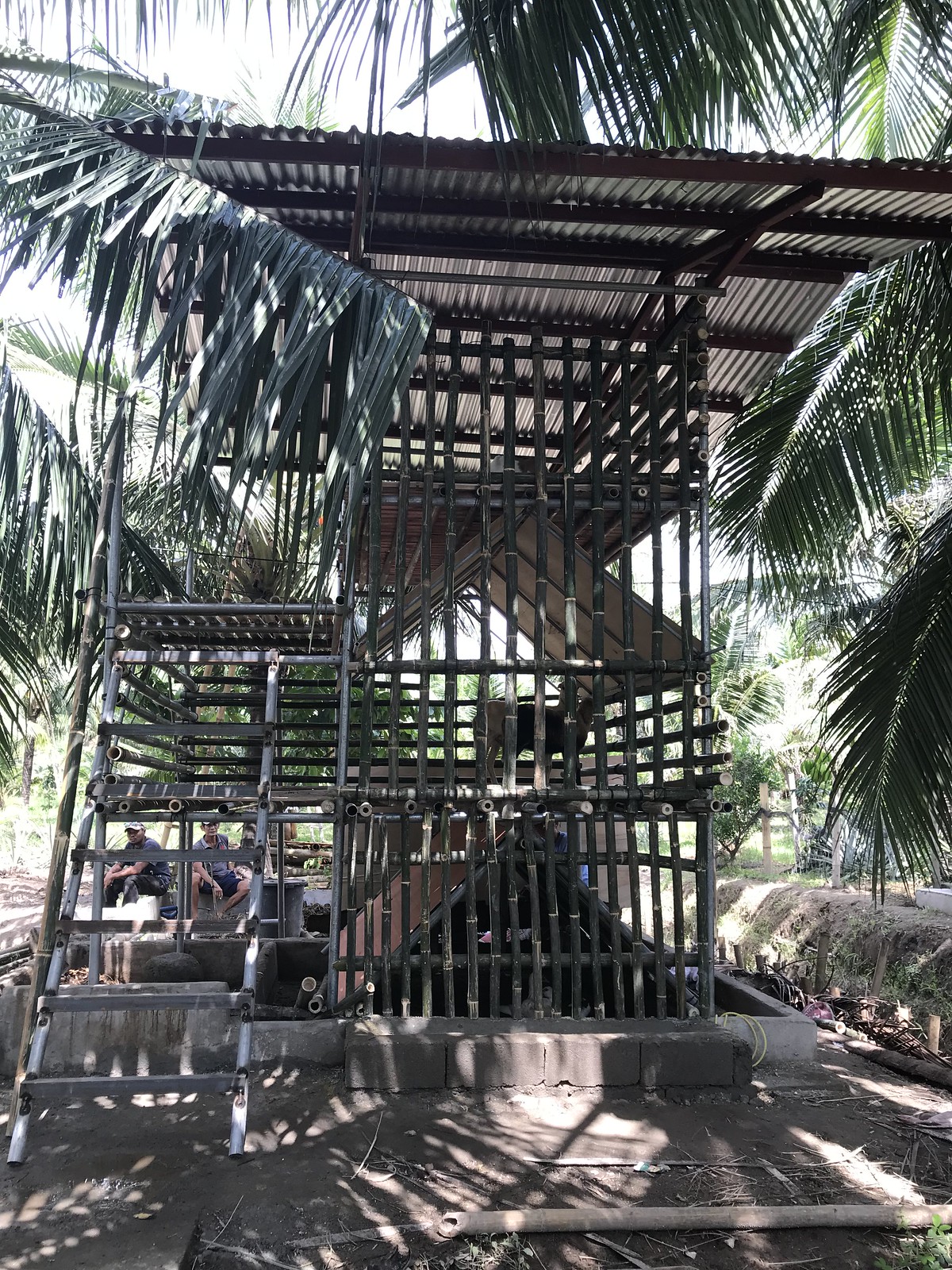
This is the original setup for vermiculture.
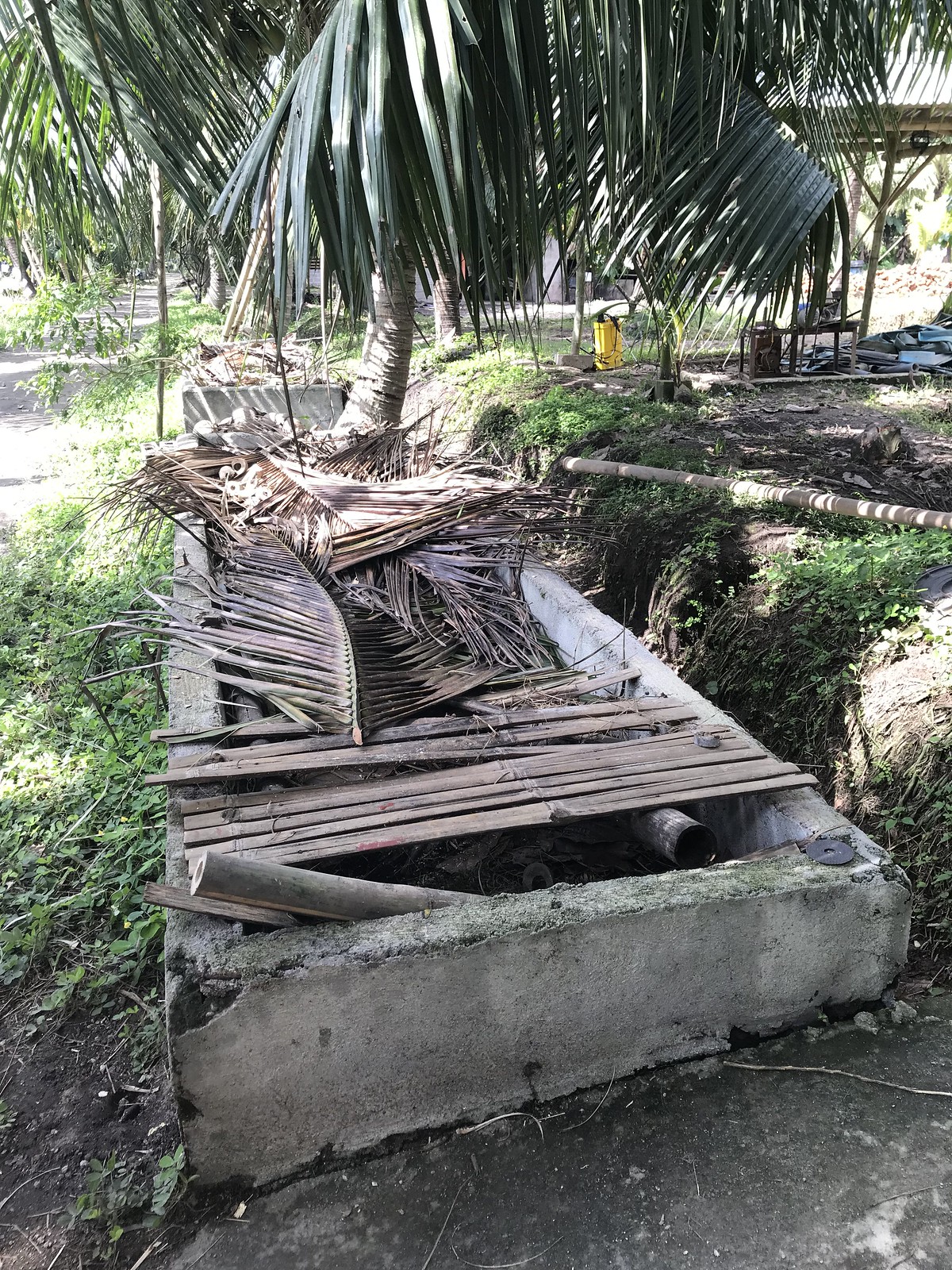
All the animals' dung goes down to a slot right next to the vermi so it's automated and easier.

He told us that the soil is like a bank. The plant sucks out (withdraws) all the nutrients and when it is depleted, you will need to deposit what it has lost so you put vermicompost. You get cheap farm inputs and lessen your farm waste in the process if you put it to good use.
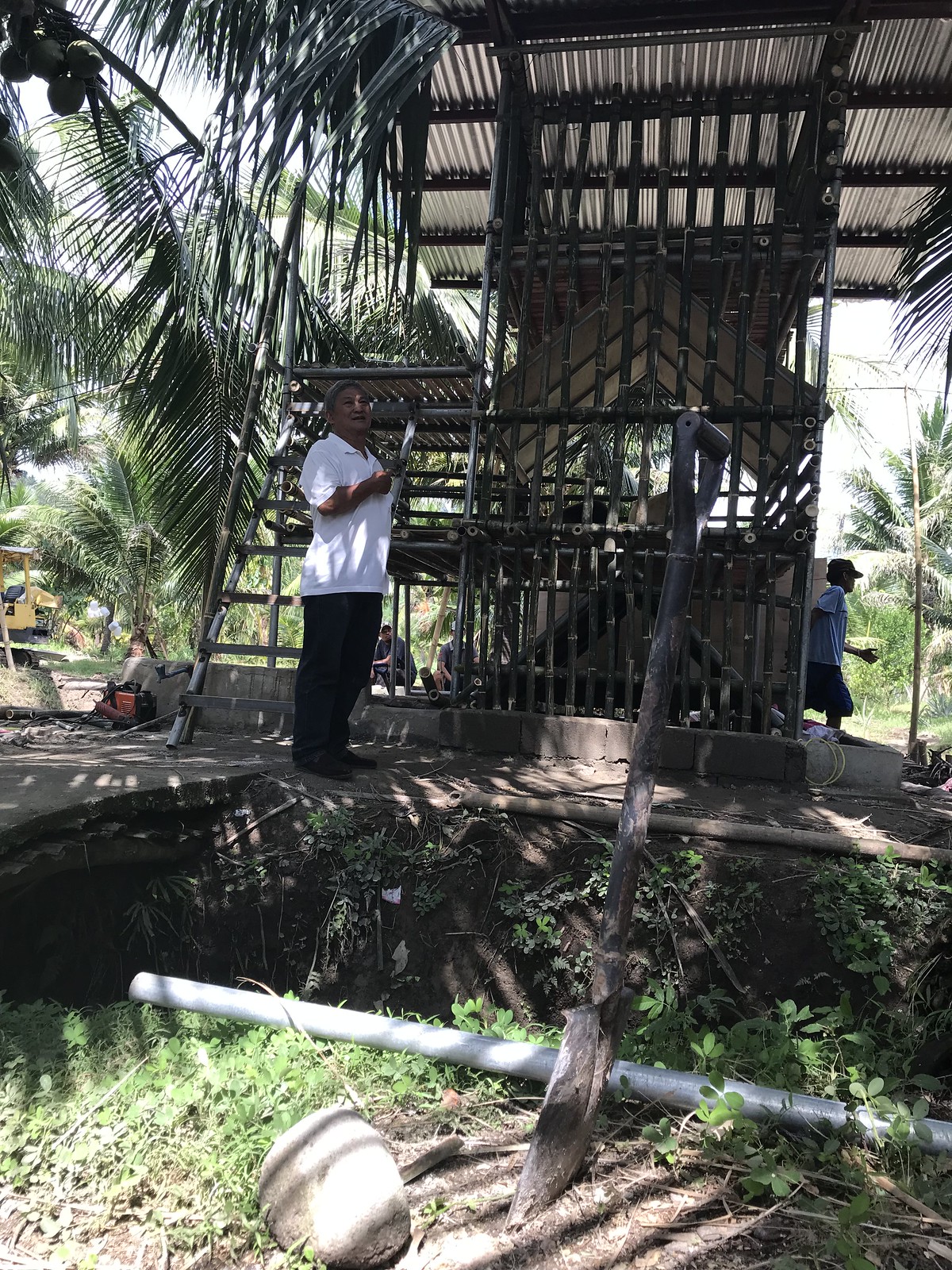
This was his old initial 2-storey structure.

To culminate this activity, he showed us was the Palamayanan or Palay-isdaan concept where he integrates palay rice farming, fish pond (isda like tilapia), fruit trees (prutas like pinya, niyog) and animal farming (hayupan like baboy, kambing, pato). There should be no chemicals or else they will die.

This area and project is still under rehab due to drought.
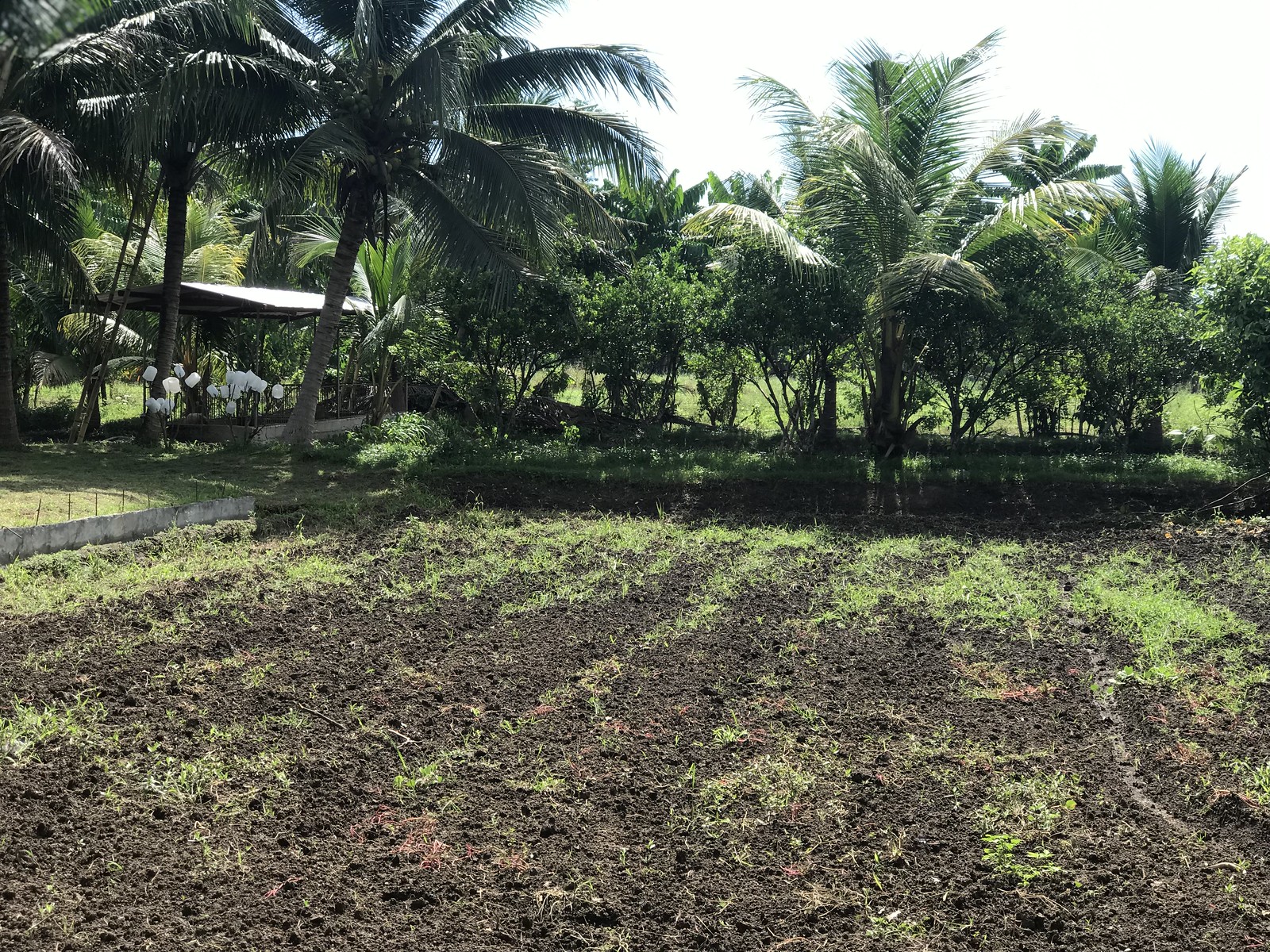

Lastly, I'd like to show you the black pig for the lechon that we ate!

They eat plants like madre de agua ;)

These are my best blog buddies - Az, Marj and Jonel! ;) Thanks, Az, for my portraits and our selfies hehe.
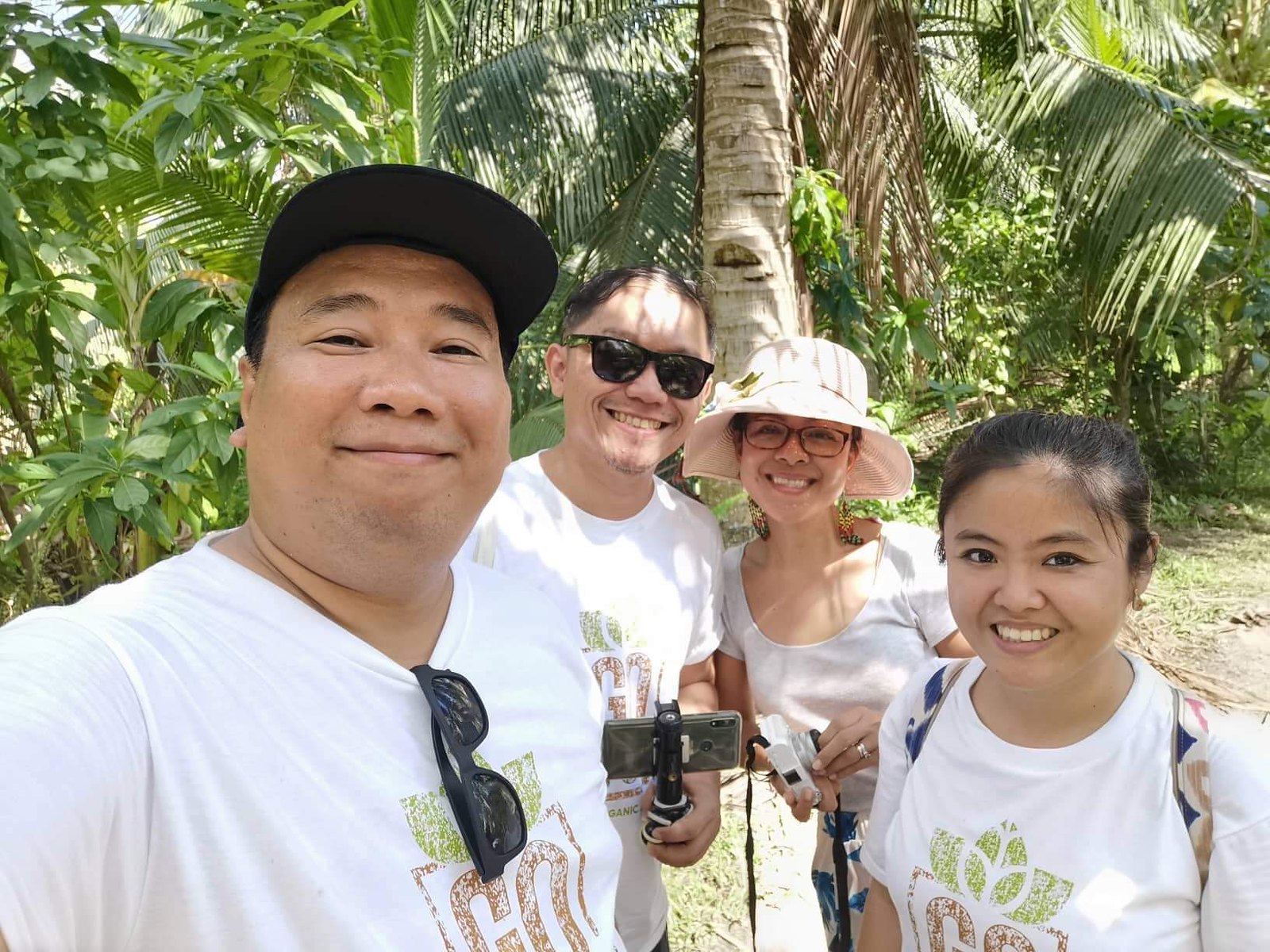
For more info on the sites we visited and if you're interested in Philippine agriculture, farm visits and organic farming, check out the ATI, E-Extension and Department of Agriculture websites.
For their Facebook, Twitter, YouTube and Instagram, you can check out @atiinteractive.
ATI also has a list of all accredited farms that are Learning Sites (LS), Extension Service Providers (ESP) and Schools for Practical Agriculture (SPA). Click here. These are the hotlines of ATI Main if you want to be in touch and ask for the farm contacts - 0920-9462474 or 929-8541 (government office hours). It is better to call their regional offices (info available at the ATI website) also as they are the ones coordinating with the farmers.
Details:
Purok Mabinuligon, Brgy. Topland, City of Koronadal
For product orders - 0955-9126892
0906-8061659
For product orders - 0955-9126892
0906-8061659
